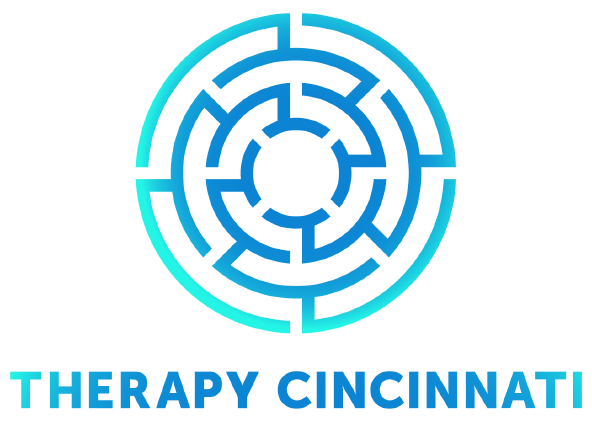Trauma can linger within us, not just as memories in our minds but as sensations stored in our bodies. When words alone are not enough, and pain resides in the very fabric of our being, Eye Movement Desensitization and Reprocessing (EMDR) emerges as a powerful therapeutic tool. In this article, we'll explore how EMDR, with its unique approach, helps individuals find relief from the trauma stored in their bodies, paving the way for healing.
Understanding Trauma's Residue:
Traumatic experiences often leave a lasting impact, not only on our thoughts and emotions but also on our physical bodies. The body can hold onto the stress and tension of traumatic events, creating a reservoir of discomfort that can manifest as pain, tension, or even illness. This is why traditional talk therapy, which primarily engages the cognitive aspects of trauma, may sometimes fall short in addressing the somatic residue of these experiences.
How EMDR Works:
EMDR is a therapeutic approach designed to help individuals process and integrate traumatic memories, including the somatic sensations stored in the body. The process involves a structured eight-phase approach, incorporating bilateral stimulation through eye movements, sounds, or taps, to facilitate the brain's natural healing process. By engaging both hemispheres of the brain, EMDR helps reprocess traumatic memories, allowing them to be stored in a more adaptive and less distressing form.
Bilateral Stimulation and the Brain:
Bilateral stimulation, a key component of EMDR, plays a crucial role in facilitating the processing of traumatic memories. This rhythmic, back-and-forth stimulation activates both the left and right hemispheres of the brain, fostering communication between them. This mimics the natural process that occurs during REM (Rapid Eye Movement) sleep, where the brain consolidates and processes information from the day. Through bilateral stimulation, EMDR taps into the brain's innate capacity for healing and integration.
Accessing Traumatic Memories:
In EMDR, therapists guide individuals to access traumatic memories without retraumatizing them. This is done in a safe and controlled environment, allowing individuals to explore their experiences at a pace that feels manageable. The bilateral stimulation helps the brain process these memories more adaptively, breaking the cycle of distress associated with the traumatic event.
Integration of Thoughts, Emotions, and Sensations:
One of the unique strengths of EMDR is its ability to integrate not only thoughts and emotions but also the somatic sensations associated with trauma. Through the bilateral stimulation, individuals can connect their cognitive understanding of the traumatic event with the bodily sensations it produced. This integration is vital for a comprehensive healing process, as it allows the entire experience to be processed and stored in memory in a way that is less distressing.
Reducing the Emotional Charge:
Traumatic memories often carry a high emotional charge, leading to intense emotional reactions when triggered. EMDR helps to desensitize the emotional intensity associated with these memories. By repeatedly revisiting the traumatic memory while engaging in bilateral stimulation, individuals can experience a gradual reduction in the emotional distress connected to the event. This doesn't erase the memory but transforms it into a narrative that is less emotionally overwhelming.
Creating Dual Awareness:
A distinctive aspect of EMDR is the concept of dual awareness. This involves simultaneously holding the traumatic memory in mind while experiencing the present moment. The bilateral stimulation helps individuals maintain a connection with the present, preventing them from becoming overwhelmed by the distressing aspects of the memory. This dual awareness promotes a sense of safety and control during the therapeutic process.
Enhancing Self-Belief and Positive Cognition:
As traumatic memories are reprocessed, EMDR allows individuals to develop more adaptive and positive beliefs about themselves. Negative beliefs formed during the traumatic event, such as "I am not safe" or "I am powerless," can be replaced with positive cognitions like "I am strong" or "I can protect myself." This cognitive restructuring contributes to a more resilient self-perception, fostering a sense of empowerment and agency.
Body Scan and Targeting Physical Sensations:
In EMDR, therapists often use a "body scan" to identify and target specific physical sensations associated with trauma. This involves exploring the body's response to the traumatic memory and addressing any tension, discomfort, or pain held in specific areas. By systematically addressing these physical sensations through bilateral stimulation, EMDR helps release the somatic residue of trauma, promoting a sense of physical relief and relaxation.
Gradual Processing and Closure:
EMDR recognizes the importance of gradual processing to ensure the individual's emotional safety. The therapy session typically follows a structured approach, working through specific targets related to the traumatic experience. Each session ends with a process of closure, allowing individuals to return to a state of equilibrium before leaving the therapeutic space. This ensures that the processing occurs at a pace that feels manageable and avoids overwhelming the individual.
The Role of the Therapist:
In EMDR, the therapist plays a crucial role as a guide and facilitator. They create a safe and trusting environment, helping individuals navigate through the complexities of their traumatic memories. The therapist's expertise lies in knowing when to gently guide the process and when to allow the individual's natural healing mechanisms to take the lead. This collaborative approach empowers individuals to actively engage in their healing journey.
In Conclusion:
EMDR stands as a beacon of hope for those seeking relief from the trauma stored within their bodies. By engaging both hemispheres of the brain through bilateral stimulation, accessing traumatic memories in a controlled manner, integrating thoughts, emotions, and sensations, reducing emotional intensity, creating dual awareness, enhancing self-belief, targeting physical sensations through body scans, and ensuring gradual processing and closure, EMDR offers a comprehensive and effective path toward healing. As individuals embark on this therapeutic journey, they discover that the scars of the past need not define their present or future, and that healing is indeed possible, one bilateral movement at a time.

